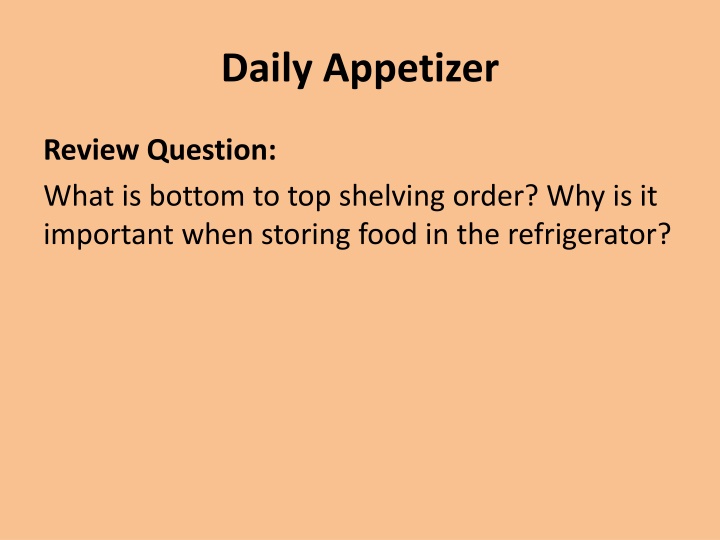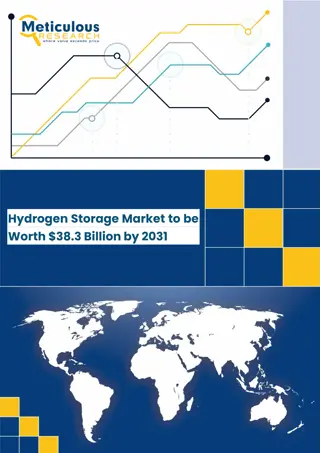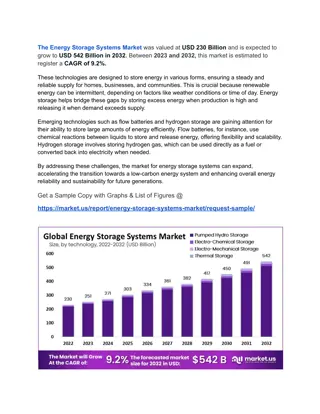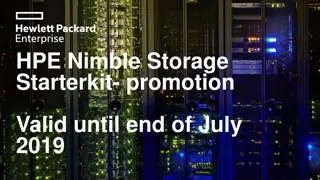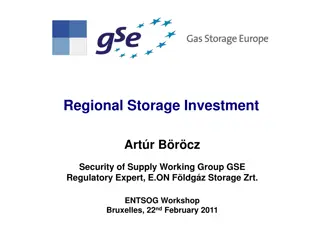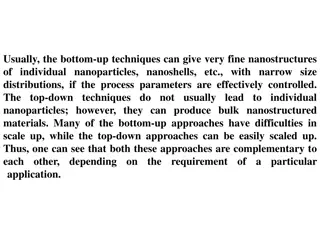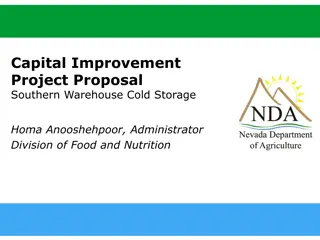Importance of Bottom to Top Shelving Order in Refrigerator Food Storage
When storing food in the refrigerator, following a bottom-to-top shelving order is crucial for maintaining food safety and freshness. This organization helps prevent cross-contamination, ensures proper air circulation, and maximizes storage space efficiency. By storing items properly in the refrigerator, you can extend the shelf life of foods and reduce the risk of spoilage.
Download Presentation

Please find below an Image/Link to download the presentation.
The content on the website is provided AS IS for your information and personal use only. It may not be sold, licensed, or shared on other websites without obtaining consent from the author.If you encounter any issues during the download, it is possible that the publisher has removed the file from their server.
You are allowed to download the files provided on this website for personal or commercial use, subject to the condition that they are used lawfully. All files are the property of their respective owners.
The content on the website is provided AS IS for your information and personal use only. It may not be sold, licensed, or shared on other websites without obtaining consent from the author.
E N D
Presentation Transcript
Daily Appetizer Review Question: What is bottom to top shelving order? Why is it important when storing food in the refrigerator?
Heat Transfer Heat is a type of energy that can be transferred to foods by conduction, convection, or radiation.
Conduction The movement of heat from one item to another through direct contact. Copper and Aluminum are the best metal conductors. Conduction is important in all cooking methods because it cooks from the outside in
Convection The transfer of heat caused by a natural movement of molecules in a fluid; whether air, water, or fat Two types: Natural and Mechanical
Radiation Energy is transferred by waves of heat or light striking the food. Infrared uses electric or ceramic element that is heated to such high temperature, it gives off waves of radiant heat.
Radiation Cont Microwave radiation is generated by agitating water molecules which creates friction and heat. Microwave does not brown food Not a good replacement for an oven!
Effect of heat on. Protein Coagulates Coagulation the irreversible transformation of proteins from liquid or semi liquid state to a solid state.
Effect of heat on. Starches Gelatinize Gelatinization starch granules absorb water, causing them to swell, soften, and clarify slightly.
Effects of heat on Sugars Caramelize Caramelization when sugar cooks and gradually turns brown and adds flavor. Responsible for most flavors we associate with cooking.
Effects of heat on Water Evaporates Fat Melts
Cooking Methods Dry Heat Cooking using air or fat Moist Heat Applying heat to food by submerging it directly into a hot liquid or by exposing it to steam Combination Heat Uses both dry and moist heat cooking methods
Cooking Method Dry Heat Broiling uses radiant heat from an overhead source Grilling uses a heat source below the cooking surface
Cooking Method Dry Heat Roasting and Baking surrounding food with dry, heated air in a closed environment Saut ing heat from a hot pan cooks food with a small amount of fat
Cooking Methods Dry Heat Pan frying heat is transferred from pan and fat to food that is typically breaded. Heat is also transferred through the hot fat by convection. Deep frying uses convection and conduction to heat food that is submerged in hot fat.
Cooking Method Moist Heat Simmering uses convection to transfer heat from liquid to food Usually used to tenderize foods through long, slow, moist heat cooking
Cooking Method Moist Heat Boiling uses convection to transfer heat from liquid to food. Rapidly bubbling liquid
Cooking Method Moist Heat Poaching uses convection to transfer heat from liquid to a food The food is placed in liquid that is held between 160 to 180 . Do Not Boil!
Cooking Methods Moist Heat Steaming uses convection to transfer heat from steam to the food being cooked. Usually used to cook delicate foods that don t need long to cook
Cooking Method - Combination Braising usually larger pieces of food that are browned in a small amount of fat; then liquid is added to the pan and it is cooked in the oven or on the stove at a low temperature for a long period of time.
Cooking Method - Combination Stewing smaller pieces of food that are browned in fat and finished in a liquid sauce. Simmered at a constant temperature until tender.
Daily Dessert What are the 3 cooking methods? and give an example of each.
